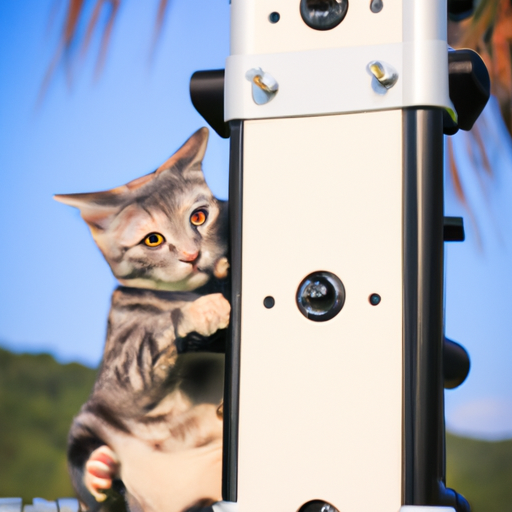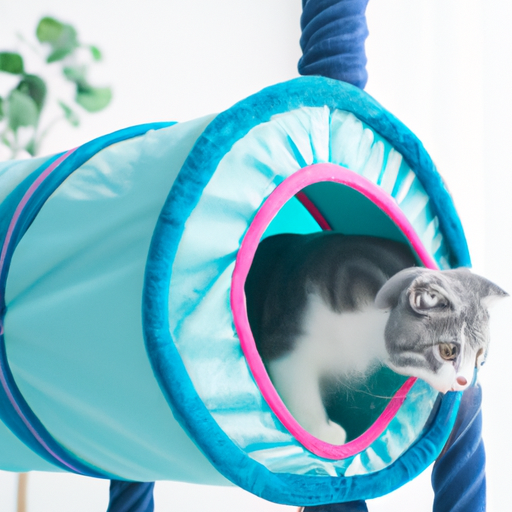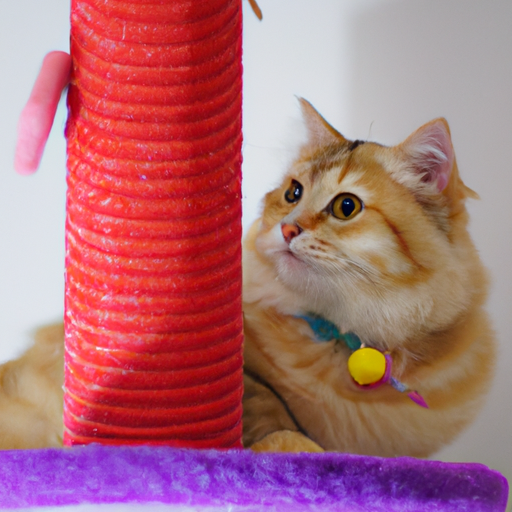How Should We Choose Small Cats When Crawling in Spot Cats?
Introduction
In recent years, small cats have gained immense popularity among pet owners, thanks to their unique characteristics and charming personalities. These feline companions are not only adorable but also bring joy and companionship to their owners. However, selecting the right small cat can be a daunting task, especially when considering the term "crawling in spot cats." This phrase refers to the behavior and traits of certain small cat breeds that exhibit playful and agile movements, often resembling a crawl as they explore their surroundings. Understanding how to choose the right small cat is crucial for ensuring a harmonious relationship between the pet and its owner. In this blog post, we will delve into the characteristics of small cats, the concept of "crawling in spot cats," and the essential factors to consider when selecting your new feline friend.
I. Understanding Small Cats
A. Definition and Characteristics
Small cats are typically defined by their size, which can vary significantly among different breeds. While most domestic cats weigh between 8 to 15 pounds, small cat breeds often weigh less than 8 pounds. These breeds are characterized by their compact bodies, playful nature, and affectionate personalities. Common traits of small cat breeds include a high level of energy, curiosity, and a strong desire for social interaction.
B. Popular Small Cat Breeds
Several small cat breeds are particularly well-known for their charming characteristics:
1. **Singapura**: Known as one of the smallest cat breeds, Singapura cats are playful, affectionate, and highly social. They have a distinctive ticked coat and large, expressive eyes.
2. **Munchkin**: Famous for their short legs, Munchkin cats are playful and energetic. Their unique appearance does not hinder their agility, and they love to explore their environment.
3. **Cornish Rex**: With their soft, curly coats and slender bodies, Cornish Rex cats are known for their playful and active nature. They are highly social and enjoy being around people.
4. **Devon Rex**: Similar to the Cornish Rex, the Devon Rex has a unique curly coat and a playful personality. They are known for their intelligence and adaptability.
5. **American Curl**: Recognizable by their distinctive curled ears, American Curls are affectionate and social cats. They are known for their playful demeanor and love for human companionship.
II. The Concept of "Crawling in Spot Cats"
A. Explanation of the Term
The term "crawling" in the context of cat behavior refers to the way some cats move when they are exploring or playing. This behavior often involves a low, stealthy approach, reminiscent of a crawl. "Spot cats" refers to those breeds that exhibit this crawling behavior, often characterized by their agility and playful nature. Understanding this concept is essential for potential cat owners, as it can influence their choice of breed based on the cat's activity level and playfulness.
B. Behavioral Traits of Spot Cats
Spot cats are known for their energetic and playful behavior. Some key traits include:
1. **Playfulness and Energy Levels**: Spot cats are often highly active and require regular playtime to keep them mentally and physically stimulated. They enjoy interactive toys and games that allow them to showcase their agility.
2. **Social Interactions and Adaptability**: These cats tend to be social and enjoy interacting with their human companions and other pets. Their adaptability makes them suitable for various living situations, from apartments to larger homes.
3. **Hunting Instincts and Agility**: Spot cats possess strong hunting instincts, which can be observed in their playful behavior. They often enjoy chasing toys and engaging in activities that mimic hunting.
III. Factors to Consider When Choosing Small Cats
A. Lifestyle Compatibility
When selecting a small cat, it's essential to consider your lifestyle and living situation. Factors such as activity level and space requirements play a significant role in ensuring a good match between you and your new feline friend.
1. **Activity Level and Space Requirements**: Some small cat breeds are more active than others. If you lead a busy lifestyle or live in a small apartment, you may want to consider a breed that is less demanding in terms of exercise and space.
2. **Family Dynamics and Other Pets**: If you have children or other pets, it's crucial to choose a breed that is known for its sociability and adaptability. Some small cat breeds are more tolerant of children and other animals, making them a better fit for families.
B. Health Considerations
Health is a critical factor when choosing a small cat. Different breeds may be prone to specific health issues, so it's essential to be informed.
1. **Common Health Issues in Small Cat Breeds**: Some small cat breeds may be predisposed to certain health conditions. For example, Munchkin cats may face issues related to their short legs, while Cornish Rex cats can be prone to skin problems. Researching breed-specific health concerns can help you make an informed decision.
2. **Importance of Veterinary Care and Regular Check-ups**: Regardless of the breed, regular veterinary care is essential for maintaining your cat's health. Ensure that you are prepared for routine check-ups and vaccinations.
C. Temperament and Personality
Each cat has its own unique personality, and understanding these traits is vital for a successful match.
1. **Assessing Individual Cat Personalities**: When visiting shelters or breeders, take the time to interact with individual cats. Observe their behavior and temperament to find one that aligns with your lifestyle.
2. **Importance of Socialization and Training**: Socialization is crucial for a cat's development. Consider how much time you can dedicate to training and socializing your new pet, as this will impact their behavior and adaptability.
IV. The Selection Process
A. Researching Breeds
Before making a decision, it's essential to research different small cat breeds thoroughly.
1. **Understanding Breed-Specific Traits and Needs**: Each breed has its own unique traits and care requirements. Familiarize yourself with these aspects to ensure you choose a breed that fits your lifestyle.
2. **Resources for Breed Information**: Utilize books, reputable websites, and breeder resources to gather information about various small cat breeds. This research will help you make an informed choice.
B. Visiting Shelters and Breeders
Meeting cats in person is a crucial step in the selection process.
1. **Importance of Meeting Cats in Person**: Interacting with cats in a shelter or breeder environment allows you to assess their behavior and personality firsthand. This experience can help you determine if a particular cat is a good fit for you.
2. **Questions to Ask Breeders and Shelter Staff**: When visiting breeders or shelters, don't hesitate to ask questions about the cat's history, health, and temperament. This information will help you make a more informed decision.
C. Observing Behavior
Observing a cat's behavior can provide valuable insights into its health and temperament.
1. **Signs of a Healthy and Well-Adjusted Cat**: Look for signs of a healthy cat, such as a shiny coat, clear eyes, and an active demeanor. A well-adjusted cat will be curious and engage with its environment.
2. **Interactions with Humans and Other Animals**: Pay attention to how the cat interacts with people and other animals. A friendly and sociable cat is likely to adapt well to a new home.
V. Preparing for a Small Cat
A. Creating a Safe Environment
Before bringing your new cat home, it's essential to create a safe and welcoming environment.
1. **Cat-Proofing the Home**: Remove any hazards that could pose a risk to your cat, such as toxic plants, small objects, and electrical cords. Ensuring a safe space will help your cat feel comfortable in its new surroundings.
2. **Essential Supplies**: Gather essential supplies, including a litter box, food and water dishes, scratching posts, and toys. Providing these items will help your cat settle in more easily.
B. Introducing the Cat to Its New Home
The introduction process is crucial for a smooth transition.
1. **Tips for a Smooth Transition**: Allow your new cat to explore its new environment at its own pace. Provide a quiet space where it can retreat if it feels overwhelmed.
2. **Establishing Routines and Boundaries**: Establishing routines for feeding, playtime, and litter box use will help your cat adjust to its new home. Setting boundaries will also help your cat understand its place in the household.
VI. Conclusion
Choosing a small cat is a significant decision that requires careful consideration. By understanding the characteristics of small cat breeds, the concept of "crawling in spot cats," and the factors to consider during the selection process, you can make an informed choice that aligns with your lifestyle and preferences. Remember to prioritize the individual needs of the cat and create a safe and welcoming environment for your new feline friend. The joy and companionship that small cats bring to their owners are immeasurable, and with the right approach, you can find the perfect addition to your family.
VII. Additional Resources
For further reading and resources, consider the following:
Books: "The Cat Encyclopedia" by Joan Miller, "The Complete Cat Breed Book" by DK.
Websites: The Cat Fanciers' Association (CFA), The International Cat Association (TICA).
Breeders and Shelters: Look for reputable breeders and local animal shelters in your area.
Online Communities: Join forums and social media groups dedicated to cat enthusiasts for support and advice.
By taking the time to research and prepare, you can ensure a fulfilling and joyful experience with your new small cat.













